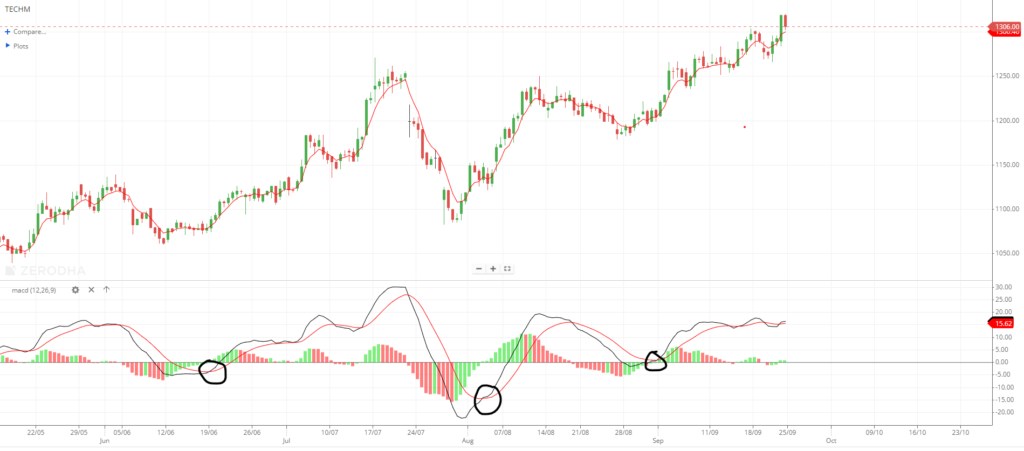
Swing Trading Unveiled
So, what exactly is swing trading? Well, think of it as the art of capturing the highs and lows in stock prices over a short to medium-term period. Unlike day trading, where stocks are bought and sold within a single day, swing traders hang onto their positions for a few days, weeks, or even a tad longer. This technique is particularly popular in the Indian stock market.
Picture this: stock prices aren’t a straight line; they resemble a series of waves, moving up and down. Swing trading is all about recognizing these waves, riding them when they surge, and knowing when they might reverse direction.
Imagine stretching a rubber band as far as it can go before it snaps back – that’s the essence of swing trading. It’s about identifying the point where a stock’s price might be due for a reversal and making the most of it.
The Swing in the Trading System
Now, let’s dive into the nitty-gritty. What’s a “swing” in this trading system? Think of it as a noticeable up or down movement in stock prices that creates a new price level. It’s not a full-blown trend but rather a shift within a trend. Swing traders aim to buy when prices dip and sell when they rise.
To make their moves, swing traders rely on a variety of tools, including technical analysis. They analyze price charts, using indicators like the Relative Strength Index (RSI), Moving Average Convergence Divergence (MACD), volume, and trend lines. They also keep a close eye on company news and industry updates to anticipate future price movements.

The Swing Trading Objective
Why do people swing trade? The primary goal is to buy or sell a stock within a short period, ideally within a single day. Swing traders seek stocks showing some trend and jump in at the start of that trend. Typically, they aim to exit early in the game.
These traders hold onto their positions for an average of a few days to a few weeks. It’s a strategy that can shine even in a bear market, capitalizing on market momentum. There are two flavors of swing trades: counter-trend (selling or buying into support or resistance areas in the direction of the primary trend) and trend-following (going with the minor trend in the direction of support or resistance).
How Does Swing Trading Work?
Alright, let’s break down how swing trading operates in a practical sense:
Pick a Stock: Start by selecting a stock with potential for short-term gains. Knowledge about the fundamentals of the stock is key.
Analyze its Chart: Dive into the stock’s historical performance using tools like RSI, MACD, volume, and trend lines. Stay updated with news related to the company and its industry.
Set Up Your Entry: Establish a stop-loss order at 5% below your entry price and a target price at 20% above your entry price. Swing traders capitalize on the bouncing pattern of stock prices between support and resistance levels.
Swing Trading Methods
Swing traders don’t put all their eggs in one basket. Instead, they make a series of smaller trades, building up to their desired position size. They use various methods such as technical and fundamental analysis, as well as charting. Common strategies include trend following, mean reversion, and employing moving averages.
Opportunities for Swing Traders
Swing traders have plenty of chances to seize profits within trends. However, it’s essential to be aware that taxes and commissions can nibble into your profits. The key is to use technical tools to spot trends and short-term price movements effectively.
Advantages and Disadvantages of Swing Trading
Advantages:
Quick profit capture.
Ability to adjust positions swiftly.
Flexibility in strategy.
Lower time commitment compared to day trading.
Disadvantages:
Requires a solid understanding of financial markets.
Risk of false signals.
Missing out on long-term opportunities.
Exposure to overnight and weekend market risks.
In Conclusion
Swing trading is like riding the waves of the stock market – it can be exhilarating and rewarding, but it comes with risks. While it offers leverage and returns, understanding the ins and outs of swing trading is crucial to avoid costly mistakes.
So, whether you’re a seasoned trader looking to diversify your strategy or a newcomer exploring the world of stocks, swing trading might just be the ticket to unlocking new opportunities in the market. Dive in, ride those waves, and remember: knowledge and discipline are your best allies in this exciting journey! 🌊💰